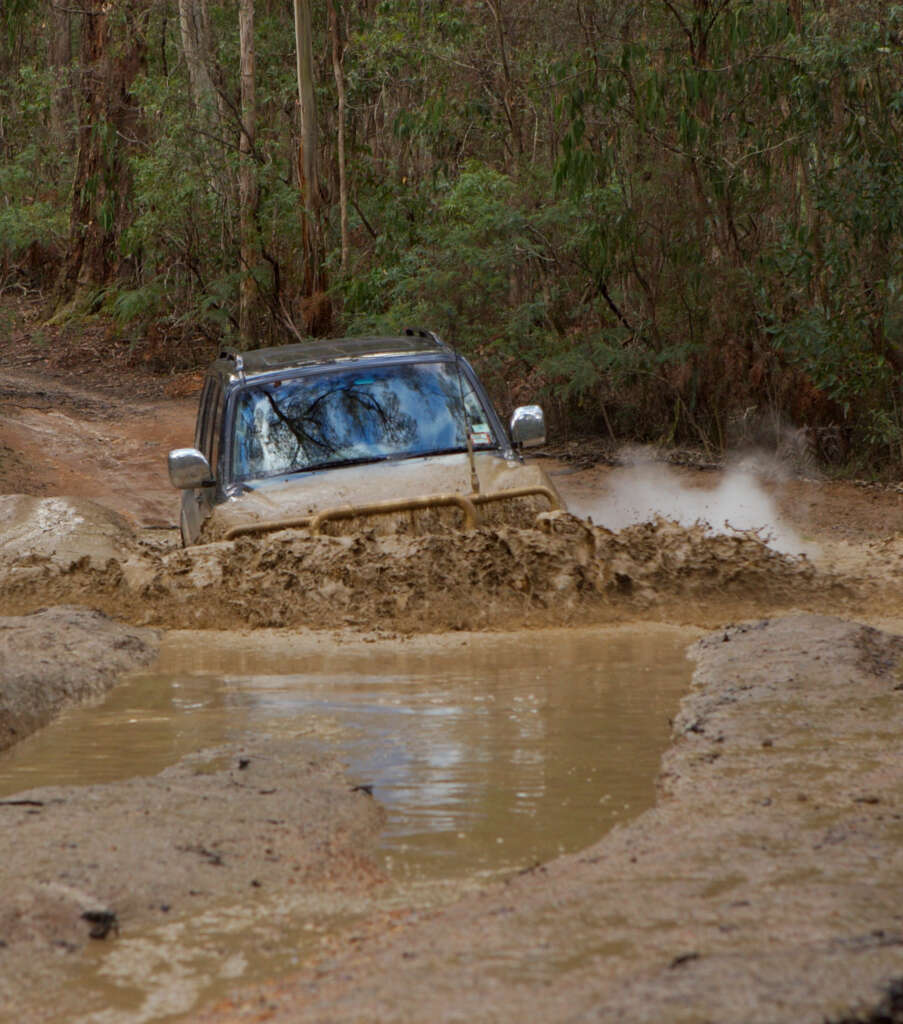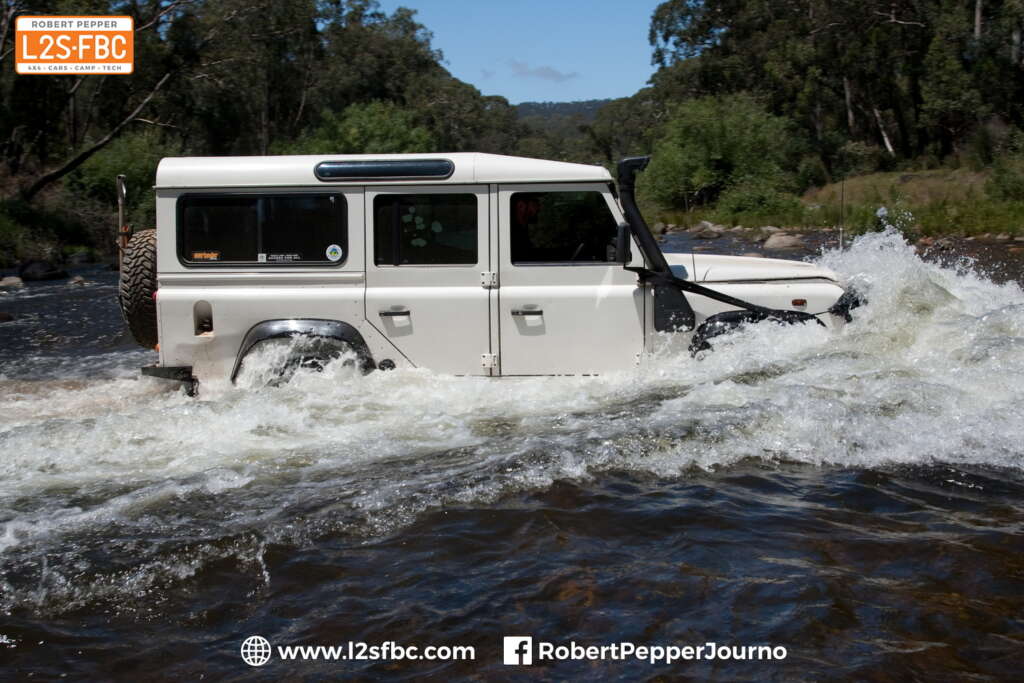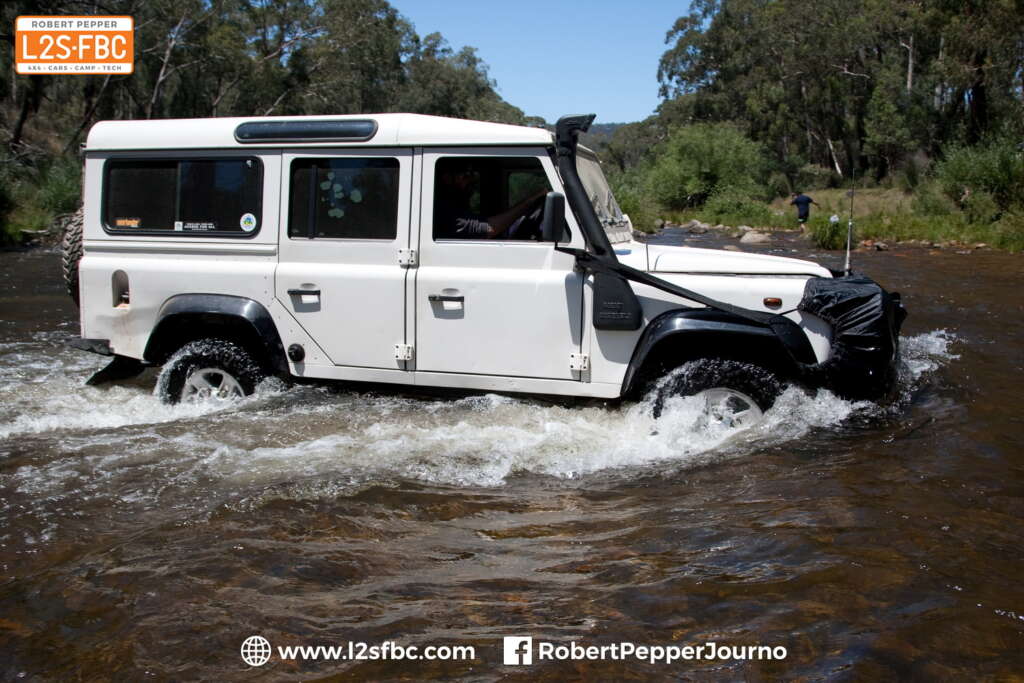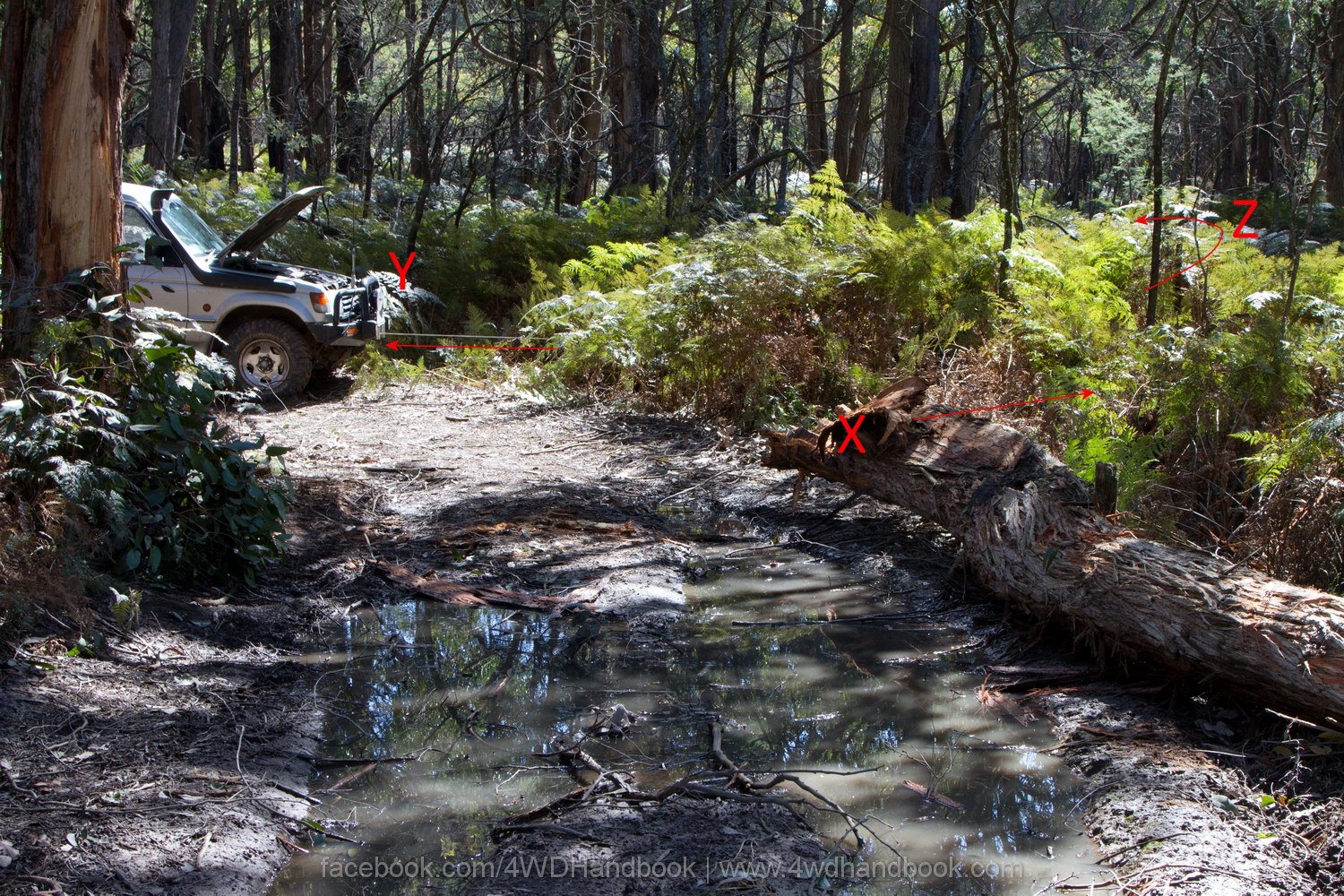
Is a bow wave a good idea during water crossings?
A recent discussion came up on my Facebook page about the merits of a bow wave during water crossings, so I thought I’d re-examine what to me seemed a self-evident truth because it is always, always, good to take another look at what you do as cars change over time, or assumptions are found to be false. In fact, a good part of my career is doing just that.
The position was “bow waves are useless, go as slow as you can instead.” I have considered this statement against the bow wave method as follows below, but I’m only going to cover the merits and demerits of the bow wave or otherwise, not a general water crossing treatise.
First, let’s define a bow wave. It is where the vehicle is driven such that water builds up ahead of the car, so it is pushing water out of the way as per the Range Rover in the title pic, and this Cruiser, driven by the most excellently bearded Mr V Widman:

Here’s an example from INEOS:

This is too fast and not a proper bow wave:

The purpose of the bow wave is said to be to reduce the water height around the car. Let us first examine the whether this is true, then the benefits.
You will observe from the photographs the water level has risen in front of the car. This can be explained by:
- trick photography
- an addition of water to the crossing
- relocation of some water from one place in the crossing to another.
- the dimensions of the water crossing have not changed as the car crosses it
#1 isn’t correct as I’m just not that good with Photoshop. I find it unlikely that some divine creature has seen fit to add water to the front of every car as it traverses a crossing, and equally unlikely the crossing reduces in volume as the car traverses it. There is of course displacement, but that would raise the level by an equal amount, and clearly there is a wave.
Therefore, I’m going with #3, some of the water has been relocated in the form of a wave. Logic dictates that if water levels are higher in one place, then they must be lower in another place. And it would appear that “the other place” is around the vehicle. I do not see this point as being up for debate. Here it is diagrammatically:

What can be debated is the merit of the bow wave technique, so having established the bow wave does indeed lower water around the vehicle, two questions remain:
- Is there any significant lowering of the water level?
- Is there any value compared to crawling along extremely slowly?
The lower the water level around the car the better as there is less chance of water ingress, and also reduced flotation – see the video below on how cars float.
There are other benefits to the bow wave too. One is increased speed relative to idling slowly. Now you never want to smash through water, but momentum will make easier work of any offroad obstacle, and many times a tiny bit more speed that walking pace will see you through. If you idle through then you may not have enough momentum for the underwater problems, and get stuck.
Another is torque. Water is 800 times dense that air, and sometimes you can’t idle over obstacles in air, you need power, particuarly if it’s muddy. So, you increase revs. This is why low range exists. If you idle though water then you may well run out of torque. This is why the advice is select low range and low gear, usually 2nd low, maybe 1st, so you have plenty of torque handy to push through the water, and handle the underwater terrain.
Here’s my Defender at idle:

And here it is going too fast:

And this is about right:

So there are good reasons to use a bow wave. But “always” is a term you want to be very careful of using, so let’s look at reasons not to create a bow wave.
The first is speed; let’s say the bottom is so rocky you simply cannot go fast enough. Then don’t go that fast. Then, there is bank erosion – water is pushed by the car to the sides, eroding the banks. Oh look, a wave…sure if there is a wave there must be a corresponding trough?
So in summary…I’m staying with the bow wave as the preferred method of water crossing as it lowers the water level around the car, and allows a useful amount of momentum. How do you know when you’ve got a good wave? When you’re pushing water out of the way, not crashing through it, and the water isn’t breaking. That’s the time-honoured way to cross water, and I don’t see a need to change it now.


